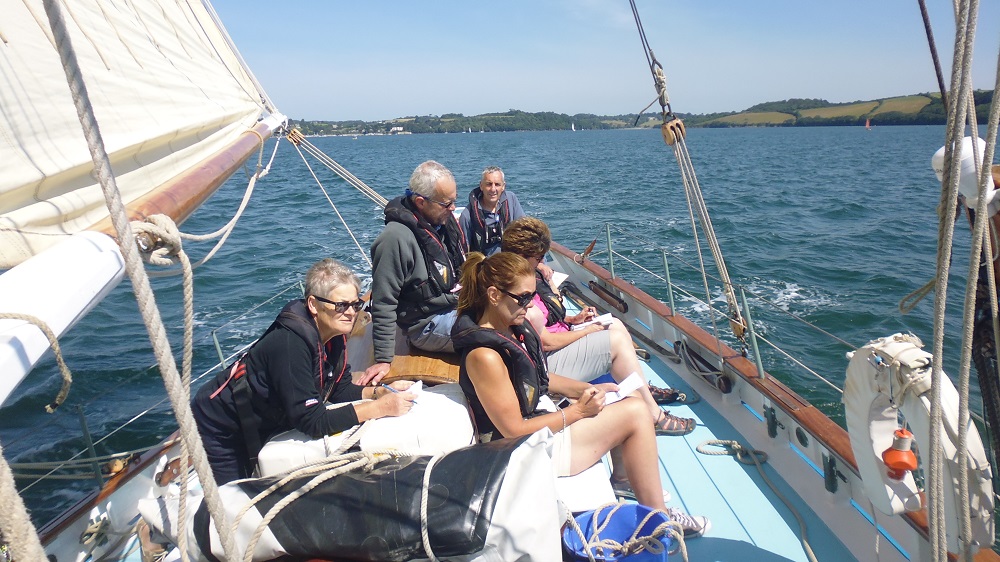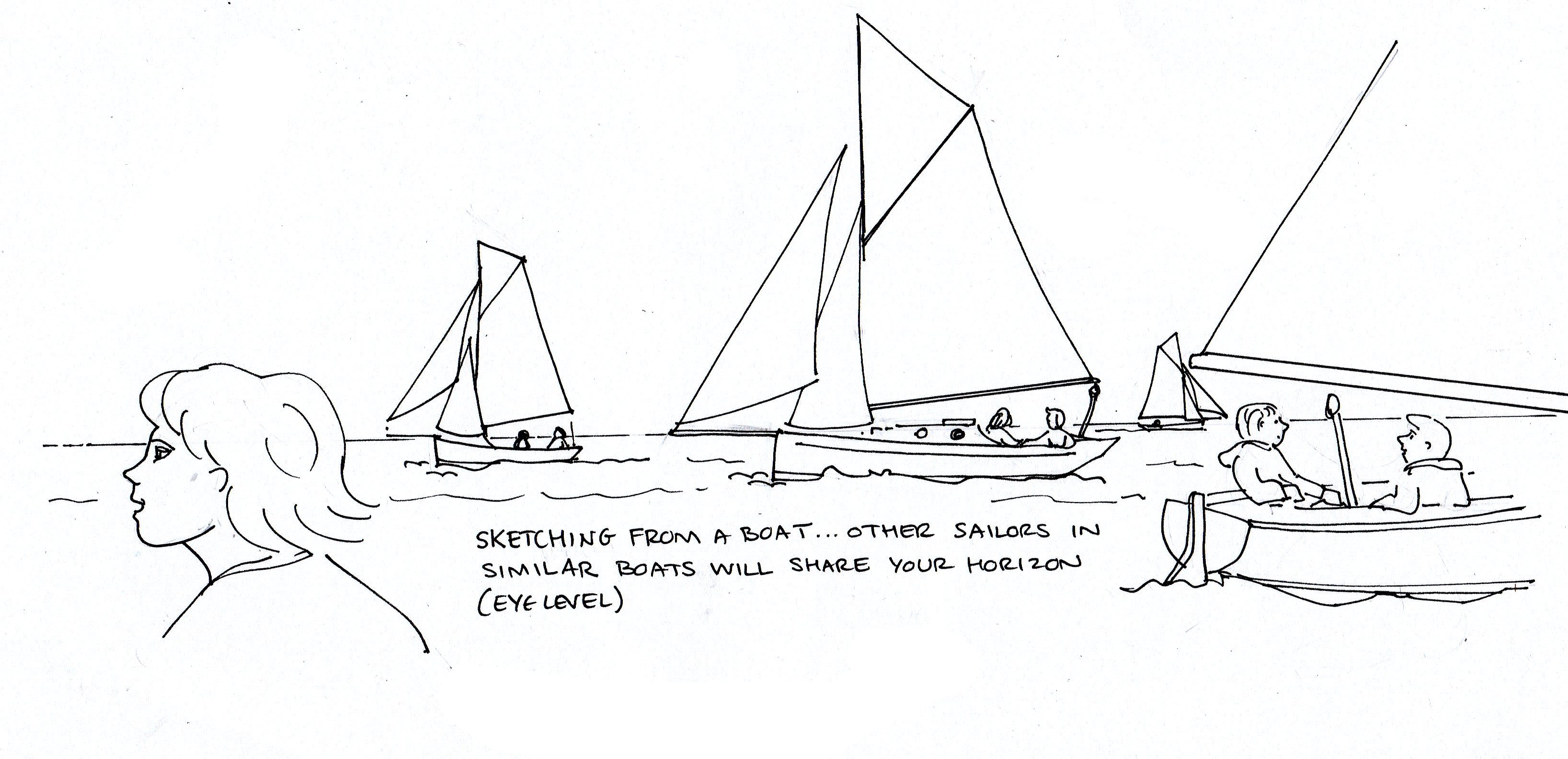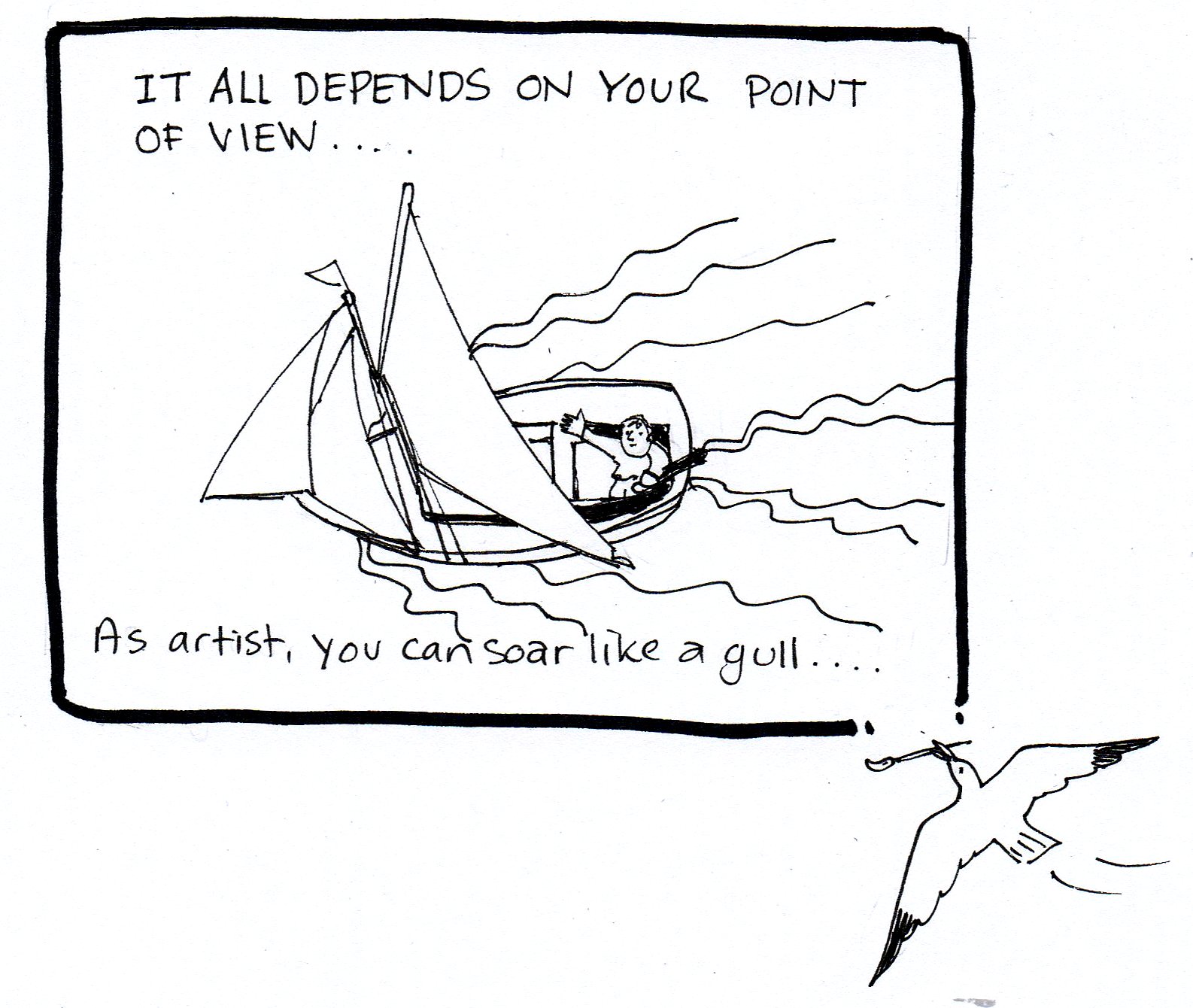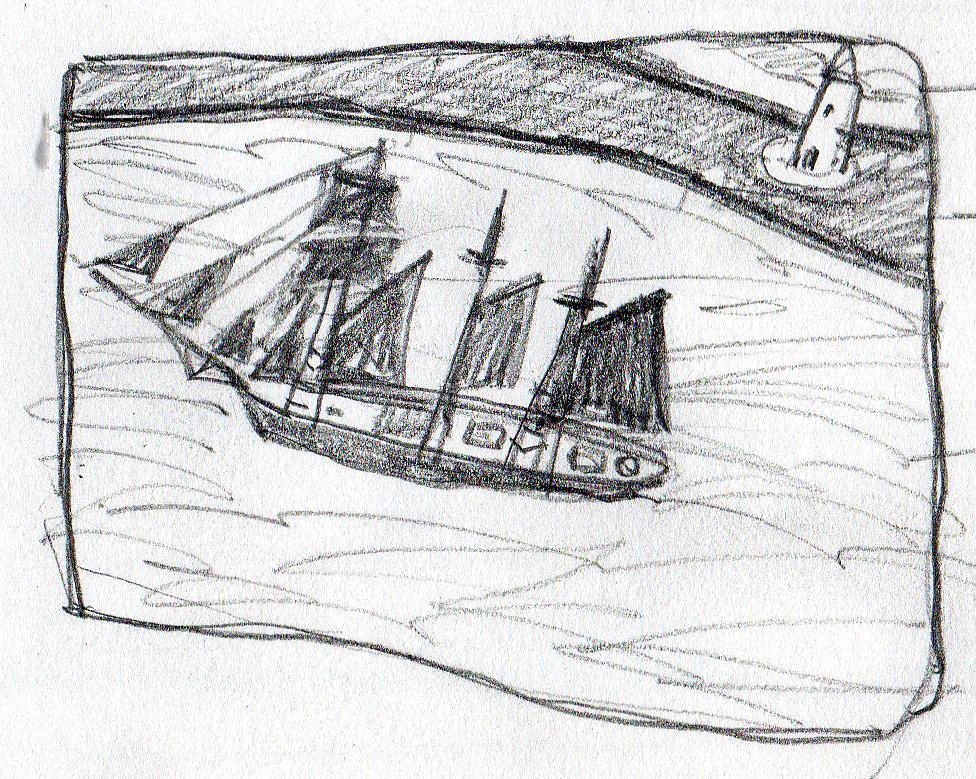Drawing at the edge of the world
This month brings more pilot cutter sailing and a few arty notes on the usefulness of horizon lines…..
My idea of a perfect moment is sitting on a traditional boat, preferably in the sunshine, with a glass of wine in one hand and a pencil in the other. My idea of a perfect job would be to get paid for it, and so when I was offered a chance to tutor a sailing/sketching cruise in Cornwall, it took me all of a nanosecond to say ‘yes please’. Which is why, only a few weeks after sailing in Cornwall on a pilot cutter, I was heading west again. This time it was to join another pilot cutter, Eve of St Mawes, skippered by Debbie Purser of Classic Sailing. My idea of job satisfaction would be to spend as much of the summer as possible combining art and sailing, so I wanted this to go well. We had five paying guests who’d signed up for three days of learning how to sail and sketch; it was intensive, it was hard work, but it was huge fun.
We drew boats as they sailed past, we drew the lovely scenery around us at anchor, we drew close up details of the boat we were on. We tore up charts of the area and stuck pieces into our sketch books, we added words, impressions, colours to build up a visual diary of the cruise. This was about learning to draw, not in order to make a finished picture to put in a frame, but to appreciate and connect better with our surroundings. To draw something you have to look at it properly, afresh, as it is in front of you at that moment; every shape, angle, tone and colour. Forget what you know or assume about it, when you pick up a pencil you have to look with a startling intensity.
Giving a drawing lesson on the deck of a boat makes it easier to put theory into practice. Here are two basic principles of perspective that your brain uses subconsciously to make sense of what your eyes take in. So you know them, but you may not know that you know them – and to draw what you see they need to be right at the front of your mind:
1. THE HORIZON IS ALWAYS AT THE ARTIST’S EYE LEVEL
Other people at the same height above sea level as you, the artist, will share your eye level. When drawing from a quayside or clifftop you have a different eye level to the sailors in your picture, but when drawing from the deck of a boat remember that crew on other boats will have their eye level on the same horizon as you – more or less, taking into account different sized boats and different sized people.
Use this fact to help you place boats correctly in the scene. Whether near or far, those eyes will all be on the same horizon (yes, it does make the size difference between near and far boats greater than you think… I’m coming to that in part 2).
You can of course choose to take a different viewpoint to the people in your picture. You can try a seagull’s eye view, for example….. in which case the horizon might not appear on your drawing at all…
2. THINGS GET SMALLER THE FURTHER AWAY FROM YOU THEY ARE
Yes, you know this, but do you realise how much smaller they get, and how quickly? If you are on board now, extend a ruler or a thumb and measure the height of the nearest boat. Even if it’s anchored nearby it will only be a few centimetres high. This one was on the next row of moorings to me – and a mast about 7m high has shrunk to less than 7cm.
If you’re at home, you can check this by looking in a mirror (I’ve done this one in blog posts before, I think). How big do you think your reflection is? Just a bit smaller than the real thing? Measure it; it will be smaller than you expect, probably about half the size of your real head. Your brain edits that information out because you don’t need to know it. That’s why drawing is difficult unless you draw what is really there instead of what your brain tells you is there.
So, when drawing a scene with lots of boats, these two principles of perspective will help you get the comparative sizes and levels right.
But that’s not all…..
You can, of course, do something completely different. Like ignoring perspective completely and treating shapes of boats as pure design….
This one was inspired by the OGA Jubilee rally last summer
Or try drawing instinctively, freely and child-like, from a deep understanding of the subject, Like Alfred Wallis:
My sketch of a Wallis painting at Kettle’s Yard, Cambridge
So, thanks to Debbie Purser at Classic Sailing (http://www.classic-sailing.co.uk/) for coming up with the idea of art cruises. If you’re inspired to give it a try, let Debbie know and when we get enough people interested we’ll arrange more for next summer. In the meantime, keep sketching, it’s good for you. Draw for fun, draw like you mean it, and don’t get too tangled up in perspective – after all, it’s only a ‘point of view’.










Anyone with a passion for the sea, boats, sailing and a desire to capture it all on paper then get in touch with Classic Sailing and sign up for a Painting/Sailing trip with Claudia. This trip on the Eve of St Mawes was exciting and informative. To learn techniques, to draw and observe sailing boats with an artists eye was such a wonderful experience. Claudia is a great teacher and has hidden talents with folk singing, playing the auto harp and fantastic sense of humour. This trip is highly recommended. Coral..
wow, thanks Coral!
Definitely want to do any painting courses you are tutoring. Please send me details.x